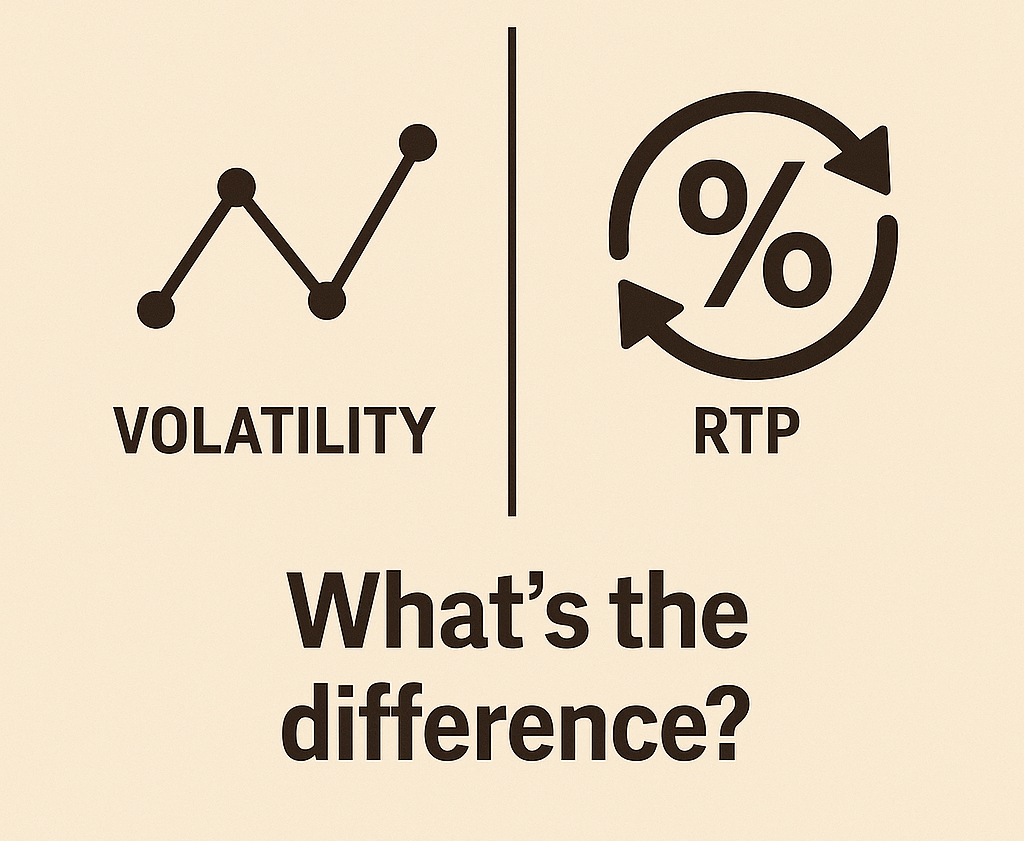When I first started playing slots, I had no idea what volatility meant—I simply hit spin and hoped luck was on my side. After going through long, dry streaks followed by the occasional big win, I began to see patterns. That’s when I realized how crucial it is to understand what is volatility in slots and how it shapes the entire gameplay experience.
What Is Volatility in Slots? How It Impacts Your Game
What Is Slot Volatility and Why It Matters
So, what does volatility mean in slots? Simply put, it refers to how often and much a slot game pays out. A slot machine volatility rating gives you insight into whether you’re likely to see frequent, smaller wins—or rarer payouts that can be significantly larger.
The meaning of volatility in slot games hit me the day I played one machine for an hour, picking up small wins every few spins. Then, I switched to another and hit a massive bonus after a long, dry streak. That’s when it clicked: slot variance is the built-in balance between risk and reward that shapes the entire experience.
Volatility vs. RTP – What’s the Difference?

At first, I confused slot variance with RTP (Return to Player), assuming they meant the same thing. But here’s the key distinction—RTP indicates the house edge and long-term payout percentage, while slot variance describes how that payout is distributed throughout the game.
For example, two slots might have identical RTP values, yet one delivers frequent wins in small amounts, while the other pays out rarely but with much bigger rewards. That’s why understanding the volatility meaning in slots is essential—it allows you to set clear expectations and choose games that match your playing style.
The Different Types of Volatility
Over time, I’ve learned to recognize different volatility games and match them to my bankroll, mood, or overall strategy. Choosing the right slot variance level isn’t just a preference—it can completely change how you experience a session. Here’s how I break them down:
High Volatility Slots
The meaning of high-volatility slots is simple: these games pay out less often, but when they hit, the payouts can be massive. Think of long, quiet stretches broken by huge, thrilling big wins—the kind that keep you coming back for more.
So, what does high volatility mean in slots? It means rare but potentially game-changing rewards combined with lots of suspense. I usually go for these when I aim for jackpots or want that adrenaline-pumping, all-or-nothing kind of thrill.
Medium Volatility Slots
Medium volatility slots provide a balanced rhythm of play. They deliver moderate wins with reasonable frequency—not too cold or volatile. These are my go-to when I want a smoother experience but still appreciate the occasional big moment, especially during free spins or bonus rounds.
Low Volatility Slots
If you’re looking for frequent wins and a more forgiving pace, low volatility slots are the way to go. These games offer smaller but consistent payouts, helping stretch your budget and prolong your session. I often start with a low slot variance to test a new game, experiment with bet sizes, or unwind without high risk.
How to Choose the Right Slot Volatility for Your Style
Considering the factors below, you can choose the right slot volatility to match your style and enhance your gaming experience.
Low Volatility (Ideal for Relaxed Play)
- When to choose: If you prefer longer, steady sessions with a lower risk.
- Benefits: More frequent, smaller wins that help keep your bankroll intact.
- Best for: Players who enjoy a more relaxed pace and less risk.
Medium Volatility (Balanced Risk and Reward)
- When to choose: If you’re looking for a mix of steady wins and occasional big payouts.
- Benefits: A balance between small wins and larger payouts.
- Best for: Players who want variety and aren’t too risk-averse.
High Volatility (For Adrenaline Seekers)
- When to choose: If you’re after a thrill and don’t mind waiting for big wins.
- Benefits: Bigger, rarer payouts that make the wait worthwhile.
- Best for: Players who enjoy the excitement of chasing big wins and are okay with taking risks.
How to Make a Smarter Choice
- Check the game’s volatility rating: Before playing, ensure the game aligns with your playstyle.
- Watch reviews and videos: Get an idea of what to expect from the game’s volatility.
- Plan your bets accordingly: Knowing the volatility helps you manage your bankroll and expectations effectively.
This is crucial advice for players everywhere, whether in Las Vegas or at a leading online casino saudi arabia, as aligning your game choice with your bankroll is key to a successful session.
How Slot Volatility Affects Payouts and Gameplay
The biggest lesson I’ve learned? A game’s volatility doesn’t just influence how much you can win—it shapes the entire feel of the session. Lower volatility games deliver frequent wins, helping your balance last longer through small, consistent payouts. But they rarely deliver that dramatic, game-changing moment.
In contrast, medium high or high slot variance might go quiet for dozens of spins, only to suddenly reward you with a big win that turns everything around.
Volatility means more than payout size—it affects how often bonus features appear, how exciting they are, and how valuable your free spins might be. Whether you’re triggering mini-games, multipliers, or jackpot chances, slot variance defines the rhythm and intensity of the gameplay.
And of course, behind it all is the random number generator, keeping every spin unpredictable. That’s why understanding the volatility meaning in slot games is so important—it helps you choose games that suit your budget, manage emotional swings, and ultimately take smarter risks, a crucial skill at any Dubai online casino, even in a world driven by chance.
Conclusion
A lot of players at online casinos in the UAE rely on understanding slot volatility to achieve a more strategic and enjoyable gaming experience.
If you’re serious about playing slots, understanding how slot variance works is essential—not just for strategy but for enjoying the game on your terms. It’s the foundation for managing your bankroll, setting realistic goals, and avoiding frustration.
These days, when I choose a slot, I’m not just looking at the visuals or bonus rounds—I’m thinking about volatility means, payout behavior, and whether I want steady wins or a high-risk thrill ride. Whether you prefer consistent play with a low volatility slot, a mix of action in medium volatility slots, or the adrenaline of high slot variance, there’s something that fits every style.
Grasping the volatility meaning in slot games changed how I approach every spin. It turned random sessions into intentional choices, making the entire experience more strategic, rewarding, and fun.
FAQs
How do I check a slot’s volatility?
I usually start by reviewing the game’s paytable or checking the developer’s official site. Most modern slots include a volatility rating, giving players a good idea of what to expect. Watching video reviews or testing the game in demo mode also helps—especially when you want to observe frequent wins or long dry spells. That’s how I gauge whether I’m dealing with low volatility, medium volatility slots, or something more unpredictable.
Are high volatility slots better for big wins?
Absolutely. If your goal is to chase big wins, high slot variances are designed for that. They may offer fewer payouts overall, but the ones that land can be significantly larger. Just keep in mind: what does high slot variance mean? It means taking on greater risk in exchange for a shot at massive rewards—perfect for players who don’t mind the wait.
Does volatility change in bonus rounds?
Yes, sometimes. A game’s slot variance can shift during bonus features or free spins, especially in slots with progressive elements, multiple stages, or adjustable multipliers. These changes add depth and unpredictability. That’s why it’s essential to understand the base game’s slot variance and how it may evolve during bonus play to make smarter decisions and maximize your potential returns.





